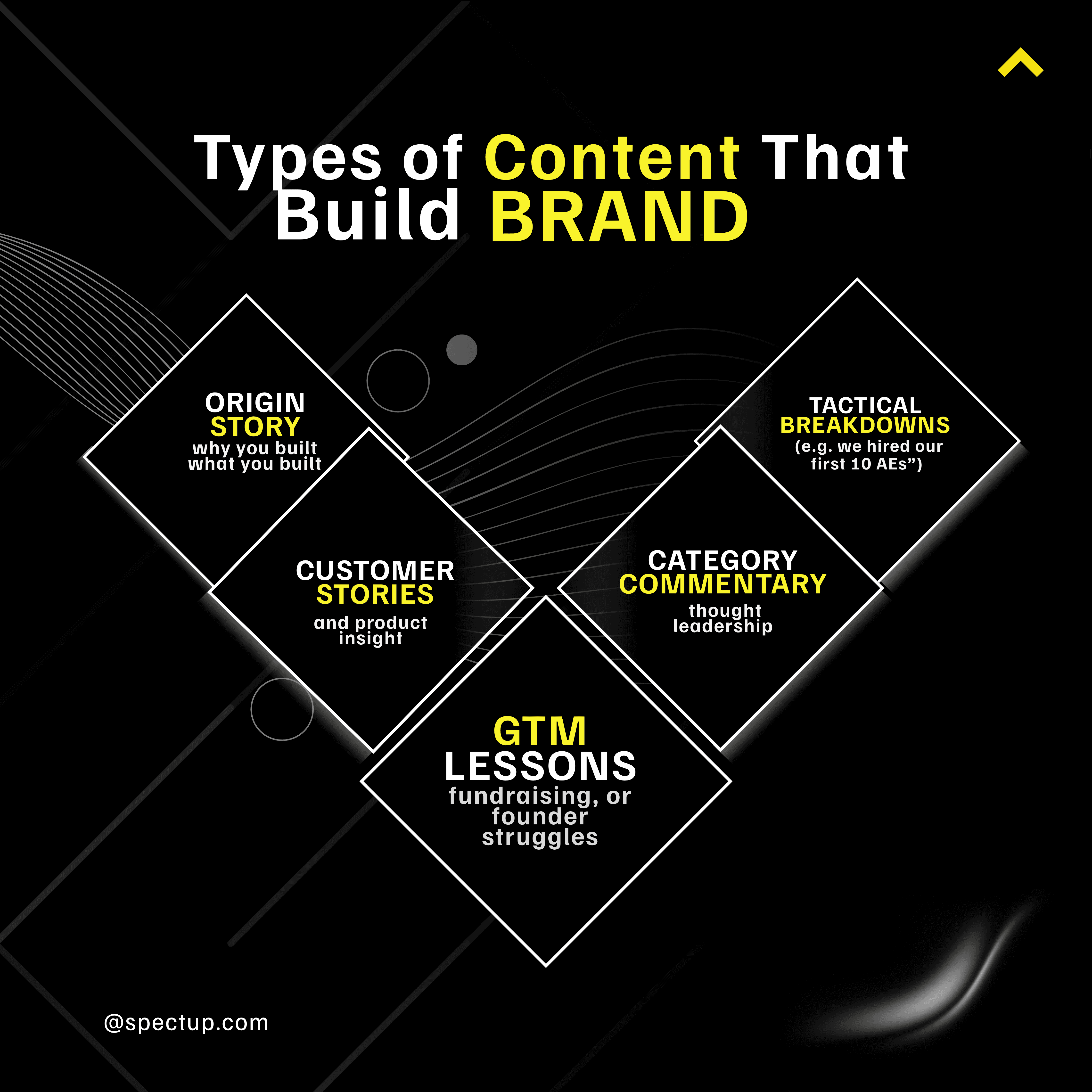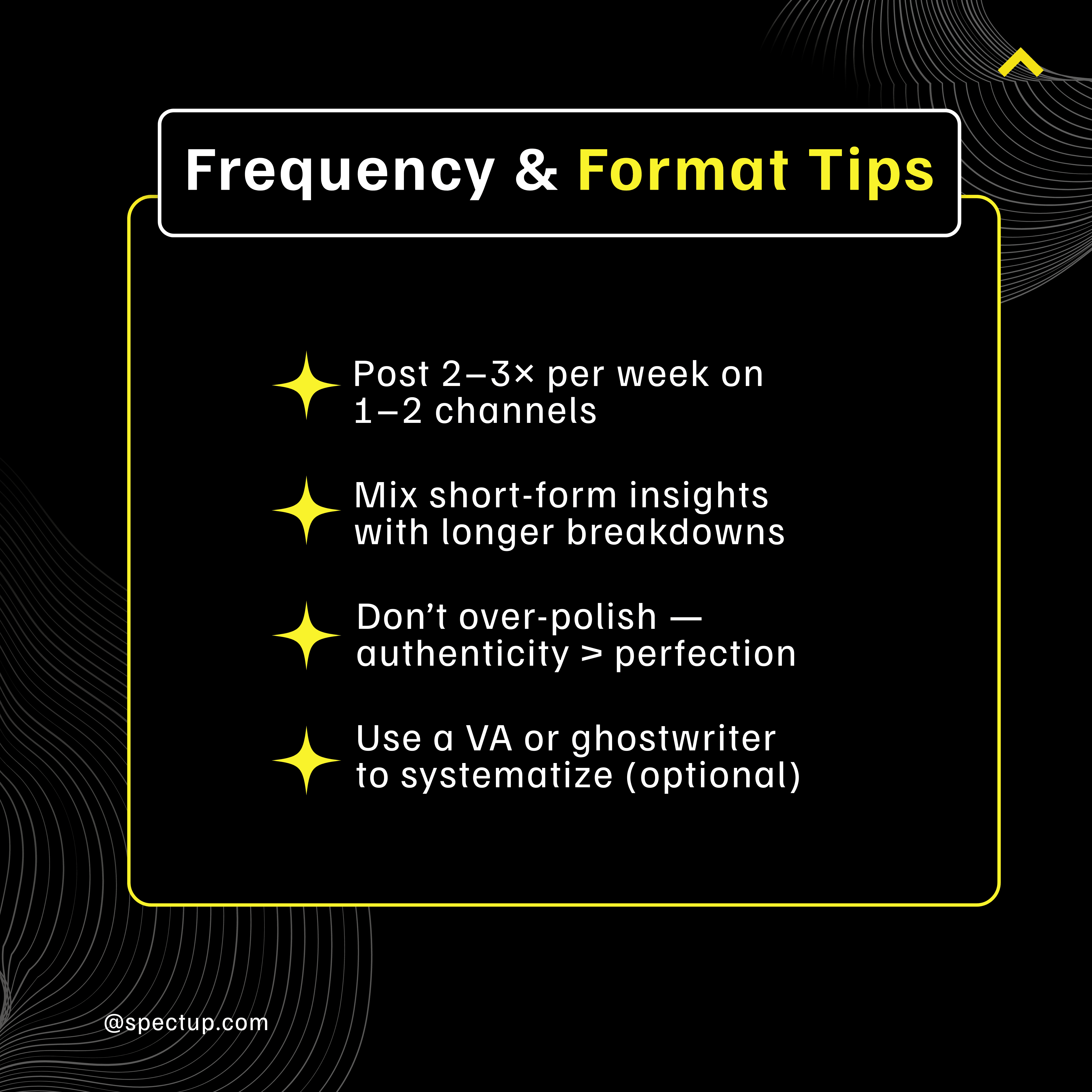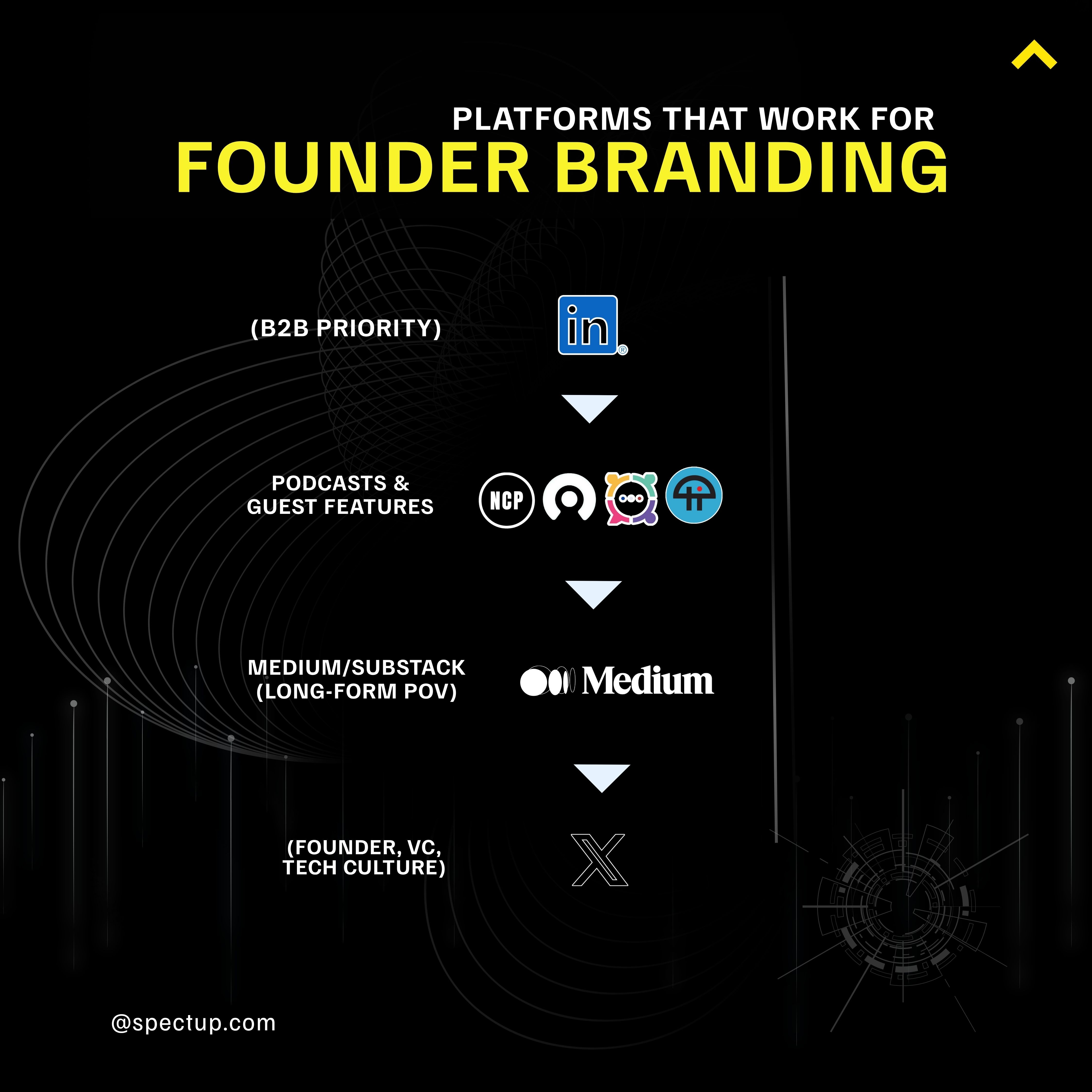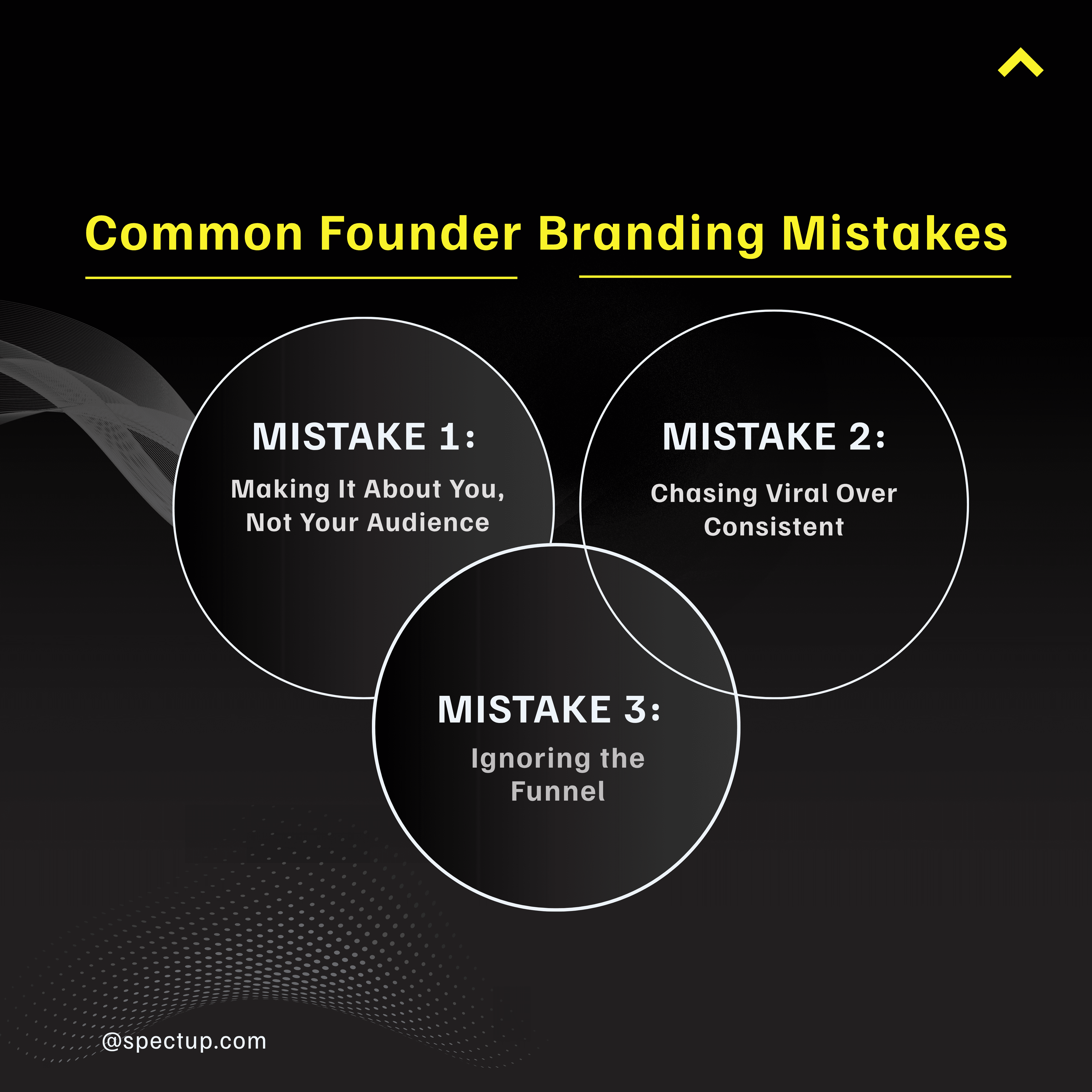The Shift: Why Buyers Trust People Over Companies
In 2025, we are witnessing a significant increase in visibility, branding, and influence on mindsets. The B2B market has become so competitive and saturated that without visibility, tech companies struggle to find cost-effective ways to generate quality leads. The shift in marketing trends and mindsets has led to a 7.9% increase in digital ad spending, totaling $678.7 billion. However, many companies are facing challenges in generating returns on their investments as conversion rates continue to decline daily. Yet 82% of companies overlook their most powerful marketing asset: their leadership team's expertise and personal brand influence.
In this article, we will talk about:
How personal connection increases prospects’ confidence and trust in doing business with you.
Founder-led content turns sales upside down: inbound discovery replaces cold outreach, generating warmer, more qualified leads.
Authentic content and interactions create an inbound pipeline that is better primed for productive sales conversations.
Mastering executive visibility is essential—not optional—for B2B founder-led growth and building a strong sales pipeline.
What is Executive Visibility in Founder Branding
In the world of B2B, executive visibility means putting a real person, usually a founder or top leader, in the front and center. It’s about showing up authentically on platforms where your buyers hang out, like LinkedIn or podcasts. This isn’t just marketing fluff; it’s a powerful way to build trust in an environment where buyers are tired of faceless corporate speak. This oversight creates a significant competitive disadvantage in a market where 75% of B2B buyers research solutions through thought leadership content before contacting sales teams.
Founder branding takes this idea one step further. When you share your story, values, and vision openly, you’re not just selling a product, you’re selling your conviction. This personal connection makes prospects feel more confident about doing business with you because they see the person behind the company. It is the secret weapon for generating leads and growing the sales pipeline. It turns the traditional sales approach on its head: instead of reaching out to potential customers through cold calls and unsolicited emails, they discover you first through valuable content and authentic interactions. This generates inbound interest that is warmer, more qualified, and primed for productive discussions.
If you want to supercharge your B2B founder content strategy, mastering executive visibility isn’t optional, it’s essential for founder-led growth and founder branding for pipeline growth.
The Role of Executive Visibility in Founder Branding
Founder branding plays a crucial role in driving pipeline growth for B2B businesses. When prospects see a founder or CEO actively engaged in thought leadership, they perceive the company as innovative, knowledgeable, and invested in their success. Furthermore, executive visibility allows founders to establish themselves as industry experts. This positions them as go-to resources for information and insights, making it more likely that potential buyers will turn to them when they have a problem or need guidance.
So how can B2B founders harness executive visibility to drive pipeline growth? Here are some key points to consider:
1. Enhancing Personal Branding
Executive visibility enhances the personal branding of founders by putting a face to the company. It humanizes the brand, making it more relatable and trustworthy. Here are several ways in which executive visibility contributes to personal branding:
Building Authentic Connections
Demonstrating Industry Expertise
Increasing Media Exposure
Creating a Unique Brand Identity
Engaging with the Community
Incorporating these elements of executive visibility into your strategy can significantly boost your personal branding efforts, ultimately leading to increased trust and engagement from your target audience.
2. Alignment with GTM Strategies
Founder branding strategically aligns with go-to-market (GTM) strategies by providing a unique selling point. It differentiates the brand in a crowded market, attracting prospects who resonate with the founder's story and values.
Key Aspects of Alignment
Unique Selling Proposition (USP): By leveraging the founder's personal narrative and vision, companies can craft a compelling USP that stands out from competitors. This personal touch can make the brand more memorable and appealing to potential customers.
Storytelling: The founder's journey, challenges overcome, and milestones achieved can be woven into the brand's story. Effective storytelling creates an emotional connection with the audience, fostering loyalty and trust.
Authentic Engagement: Prospects are more likely to engage with a brand that feels genuine. When founders share their insights, experiences, and values, it humanizes the company, making it relatable to the target audience.
Values Alignment: Prospective buyers often seek brands whose values align with their own. Founder branding allows for clear communication of these values through the founder's voice, ensuring alignment with like-minded prospects.
Benefits for GTM Strategies
Differentiation: In a market saturated with similar products or services, founder branding sets the company apart by highlighting what makes it unique beyond just features and benefits.
Trust Building: Trust is a critical component in B2B transactions. A visible and approachable founder can build trust more effectively than faceless corporate messaging.
Network Leverage: Founders often have extensive professional networks. These connections can be leveraged to introduce the brand to new audiences and create strategic partnerships.
By incorporating these elements into your GTM strategy, you can harness the power of founder branding to attract and retain customers who connect deeply with your brand’s ethos and mission.
3. Macro Trends Behind the Shift
Several macro trends are contributing to the shift towards founder branding:
Decline of Trust in Corporate Messaging: With corporate messaging losing credibility, buyers seek authenticity and transparency from individuals.
Rise of Founder-Led Companies: Founder-led companies on platforms like LinkedIn and podcasts are gaining traction due to their authentic narratives.
Demand for Authenticity: Buyers crave behind-the-scenes access and genuine interactions, leading to longer buying cycles and extensive self-research.
4. Implications for Founders
Founder branding has important implications for founders:
Selling Conviction: Founders are not just selling a product but also their conviction and passion, which resonates with prospects on a deeper level.
Buying into the Founder: Prospects want to "buy into" the founder as much as the company itself. A visible and credible founder can drive awareness at the top of the funnel and build trust at the bottom.
Founder branding goes beyond traditional marketing tactics, tapping into human connections and shared values to fuel pipeline growth organically.
How Founder Branding Fuels Pipeline Growth
Founder branding is a powerful tool that can significantly impact your sales pipeline. Here's how it works:
Generates Inbound Interest
Thoughtful content drives followers → leads → pipeline
Social content creates multiple touchpoints outside paid channels
This strategy aligns well with the principles of inbound sales, where the focus is on attracting customers through valuable content.
Reduces Sales Friction
Prospects come in “pre-warmed” — they’ve already seen your content
Your brand builds trust before the first discovery call
Founders with credibility accelerate the sales cycle
Attracts Higher-Quality Leads
Clear messaging → qualified audience → tighter ICP fit
Branded content filters out mismatched leads
Strong founder POV appeals to values-aligned buyers
Boosts Conversion for Outbound Efforts
Sales emails that name-drop the founder get better open rates
Cold leads convert faster when they’ve “seen you around”
Personal brand = familiarity = lower perceived risk
Additionally, leveraging founder branding can lead to significant sales acceleration, making outbound efforts more effective.
What Executive Visibility Looks Like in Practice
Types of Content That Build Brand
Building your founder brand requires a strategic mix of content that resonates with your audience and showcases both expertise and authenticity. Here’s how you can structure your content for maximum impact:
1. Origin Story
Share the “why” behind your company: Explain the inspiration or problem that drove you to start your business.
Example: Break down pivotal moments, early setbacks, or personal motivations.
Tip: Use anecdotes and real-life challenges to humanize your journey—this fosters connection and relatability.
2. Customer Stories & Product Insight
Highlight real customer outcomes: Feature testimonials, case studies, or user success stories to build credibility.
Behind-the-scenes product development: Reveal iterations, pivots, and lessons learned from building or refining your product.
Interesting fact: According to HubSpot, content featuring customer success increases trust by up to 73%.
3. GTM (Go-To-Market) Lessons, Fundraising Wins & Founder Struggles
GTM playbooks: Share what worked (and what didn’t) when bringing your product to market.
Fundraising narratives: Describe the process of pitching VCs or bootstrapping—include numbers or pitch deck teardowns when possible.
Founder vulnerability: Be open about setbacks, mistakes, and personal growth; this transparency builds loyalty.
4. Category Commentary & Thought Leadership
Industry analysis: Offer informed opinions on trends, market shifts, or competitor moves.
Actionable tip: Use data points or unique frameworks to position yourself as a forward-thinking leader.
Challenge the status quo: Don’t be afraid to voice contrarian takes if they’re well-founded—this sparks engagement and debate.
5. Tactical Breakdowns
“How we hired our first 10 AEs” is just one example.
Step-by-step guides: Walk readers through specific processes—hiring, onboarding, sales playbooks, etc.
Templates & checklists: Provide actionable resources that help others replicate your results.
Metric-driven insights: Back up advice with real numbers and outcomes for added credibility.
Pro Tip: Rotate across these content types weekly for balanced coverage—this keeps your audience engaged while reinforcing different facets of your brand.

Frequency & Format Tips
Post 2–3× per week on 1–2 channels: Consistency is crucial. Aim to publish content regularly on your chosen platforms, such as LinkedIn and Twitter. This frequency helps maintain visibility and keeps your audience engaged without overwhelming them.
Mix short-form insights with longer breakdowns: Balance your content by sharing quick, actionable tips alongside in-depth analyses. Short-form posts could be quick thoughts or insights, while longer pieces might include detailed case studies, how-to guides, or comprehensive industry overviews.
Don’t over-polish — authenticity > perfection: Strive for genuine communication rather than flawless execution. Authenticity resonates more with audiences than overly polished content. Share real experiences and honest reflections to build a deeper connection with your followers.
Use a VA or Ghostwriter to Systematize (Optional)
Consider hiring a virtual assistant (VA) or ghostwriter to help streamline your content creation process. They can assist with tasks such as:
Content scheduling: Plan and schedule posts in advance to ensure consistent publishing.
Drafting posts: Create initial drafts based on your ideas and voice.
Editing and proofreading: Refine content for clarity and coherence without losing authenticity.
Engagement tracking: Monitor responses and engagement metrics to inform future content strategies.
By leveraging the support of a VA or ghostwriter, you can focus on generating high-quality ideas while maintaining an efficient and effective content pipeline.

Real-World Examples of Founder Branding Driving Pipeline
Key Performance Indicators (KPIs) to Track Effectiveness
When it comes to measuring the effectiveness of executive visibility efforts, there are several key performance indicators (KPIs) that can provide valuable insights:
Social Media Engagement: Monitor the engagement metrics on platforms like LinkedIn, Twitter, and Instagram. This includes likes, comments, shares, and overall reach of your posts.
Website Traffic: Use tools like Google Analytics to track the number of visitors to your website. Look for any spikes in traffic that coincide with your branding activities.
Lead Generation: Keep a record of the number and quality of leads generated during specific periods. This will help you understand if there is a direct correlation between your branding efforts and lead generation.
Correlating Social Media Engagement and Website Traffic with Quality Lead Generation
One of the most effective ways to assess the impact of founder branding on lead generation is by correlating social media engagement and website traffic with the quality of leads generated.
For example, if you notice a significant increase in social media engagement (such as likes and shares) along with a corresponding spike in website traffic, it could indicate that your branding efforts are resonating with your target audience. Additionally, if these leads are converting into high-quality prospects or customers, it further validates the effectiveness of your executive visibility strategy.

Example 1: B2B SaaS CEO on LinkedIn
A B2B SaaS CEO leveraged LinkedIn as their primary platform for personal branding. They consistently shared posts about go-to-market strategies, hiring practices, and company culture.
Results:
The CEO's efforts resulted in an impressive influx of inbound demo requests, averaging over 50 per month.
Additionally, venture capital firms began sharing their content, leading to warm introductions and ultimately more deals being closed.
Example 2: PLG Startup Founder with a Podcast
Another successful case involves a founder of a product-led growth (PLG) startup who decided to start a podcast.
Strategies Implemented:
The founder invited other operators and early users within their industry as guests on the show.
By doing so, they not only gained valuable insights but also established themselves as an authority figure in their vertical.
Impact:
As a result of this podcasting initiative, approximately 30% of the startup's sales pipeline cited the podcast as their primary source for discovering the company.
Example 3: Technical Co-Founder Sharing Product Roadmap
In yet another instance, a technical co-founder took an unconventional approach by openly discussing their product decisions and tradeoffs through short threads on social media platforms.
Outcomes:
This transparent communication strategy helped build credibility among chief technology officers (CTOs) and developers who were potential clients. Consequently, it led to increased close rates for enterprise deals as trust was established between parties involved.
Aligning Founder Branding with Marketing and Sales
Add Founder Content to Demand Gen
Repurpose founder posts into ads, emails, landing pages
Use founder videos in nurture sequences
Promote founder content on company channels with UTM tracking
Enable Sales With Founder Assets
Share top-performing posts as sales enablement content
Add founder quotes/testimonials to deck
Create “About the Founder” pages that build trust for cold leads
Track and Attribute Founder-Driven Pipeline
Use form fields like “How did you hear about us?”
Track branded search terms and direct traffic surges
Compare pre/post engagement with pipeline creation
How to Start Building Your Founder Brand (Without Burning Out)
Building a personal brand as a founder can be a powerful way to drive growth and connect with your audience. However, it's important to approach it strategically to avoid burnout. Here are four steps to help you get started:
Step 1: Define Your POV
Your point of view (POV) is what sets you apart from other founders and industry experts. Take some time to reflect on the following questions:
What do you believe about your market?
What makes your journey or insight unique?
What do your customers wish they knew?
Step 2: Choose 1–2 Core Channels
Instead of trying to be everywhere at once, focus on the channels where your audience is most active. For B2B businesses, LinkedIn is often the best platform, while Twitter can be effective for reaching builders and investors.
Step 3: Build a Light Publishing Habit
Consistency is key when it comes to building your personal brand. Set aside 60 minutes each week to write or record content. This could be in the form of blog posts, videos, podcasts, or social media updates. Don't worry about perfection — use voice notes, rough drafts, or repurpose internal content as needed. Start with a weekly cadence and gradually increase frequency as you build momentum.
Step 4: Layer in Support (If Needed)
If you find yourself struggling to keep up with content creation or need an extra boost of creativity, consider bringing in support. This could involve hiring a ghostwriter, editor, or marketer to assist you. Additionally, explore AI tools that can help with outlining or refining your content. Another option is to record your content and have it transcribed or turned into posts by someone else.
By following these steps and staying true to your unique perspective, you'll be well on your way to building a strong founder brand without overwhelming yourself in the process.
Common Founder Branding Mistakes to Avoid
Mistake 1: Making It About You, Not Your Audience
When creating content, it's easy to fall into the trap of making it all about yourself and your accomplishments. However, this approach can be counterproductive. Instead of saying, "here's what I did," shift your focus to "here's what you can learn." Always anchor your stories in value, relevance, or insight that resonates with your audience.
Mistake 2: Chasing Viral Over Consistent
While going viral may seem appealing, it's important to remember that one hit post won't build your brand. What truly matters is having a sustained point of view (POV) that consistently speaks to your target audience. Instead of solely focusing on likes and shares, prioritize engagement from your ideal buyers.
Mistake 3: Ignoring the Funnel
Sharing valuable content is great, but it's equally important to have a clear call-to-action (CTA) that drives your audience towards something specific. Whether it's a demo page, newsletter signup, or lead magnet offer, make sure your content aligns with your go-to-market (GTM) strategy. This could be product-led growth (PLG), sales-led approaches, or a combination of both.

Conclusion: Visibility Builds Velocity
Personal branding for founders is not just a buzzword — it’s your secret weapon in the B2B arena. When you amplify executive visibility with intentional, strategic content, you don’t just get noticed; you accelerate pipeline growth. Think of it as turning your story into a magnet that pulls leads toward your product.
Here’s what makes this work:
Leverage LinkedIn and social selling tactics to create genuine connections. These platforms aren’t just for posting updates — they’re powerful channels for inbound marketing and founder-led growth.
Integrate GTM founder tactics by aligning your content with your go-to-market strategy. This ensures every post, thread, or podcast episode feeds directly into sales velocity.
Build a focused B2B founder content strategy that turns visibility into measurable results — more demos, warmer leads, and faster deals.
Ask yourself: Are you showing up as the authentic founder who prospects want to buy into? If yes, then you’re not only building trust but also powering pipeline velocity like a pro. Visibility isn’t just about being seen; it’s about being the reason your pipeline moves faster.
Niclas Schlopsna
Partner
Ex-banker, drove scale at N26, launched new ventures at Deloitte, and built from scratch across three startup ecosystems.







